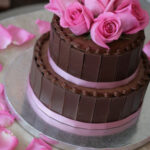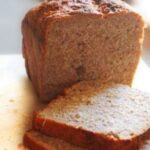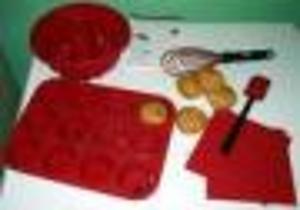Tried and failed at pound cake? Well not anymore! Below you will find not only a verified and tested pound cake recipe, but the steps, the know-how, and even a trouble-shooting guide to make a successful pound cake at home. Whether it be for a simple loaf, bundt pan, or even a wedding cake. Knowing the right steps will get you that sweet and buttery perfection every time.
First Step: The Recipe
Have a recipe you have tried out for years? You can still use that recipe. Just skip to the “Second Step: Ingredients” and make sure you follow those guidelines. Want a new one? Well then use the recipe below:
Classy Vanilla Pound Cake
3 Cups All-Purpose Flour
3 Cups Granulated White Sugar
5 Large Eggs
1 Cup Whole Milk
1 Cup Unsalted Sweet Cream Butter
1/2 Cup Crisco Shortening
1/2 tsp. Baking Powder
1/2 tsp. Salt
1/2 tsp. Almond Extract
1/2 tsp. Vanilla Extract
Second Step: The Ingredients and Tools
This is what most recipes tend to leave out and applies to all pounds cakes and primarily all cake recipes in general.
First: All ingredients should be room temperature. This includes eggs, milk, butter, etc. In a hurry? Give your eggs a quick dip in warm water to bring them to room temperature.
Second: Your flour, baking powders, and salts should always be sifted together. Some recipes may call for you to sift your dry ingredients. Be sure that this does not include the sugar. Some recipes do consider sugar as a “dry ingredient”. Pound cakes, however, do not.
Third: Always use high quality ingredients and never substitute. Pound cakes and all cakes can be very sensitive to changes. Use the ingredients a recipe calls for, but also use high-quality. You do not have to buy the most expensive ingredient out there, but typically stay away from store brand items. I have noted in the past a different outcome with store brand as oppose to the actual manufacturer.
Fourth: Always use light colored cake pans. Dark colored or glass pans tend to hold in more heat, causing you to have burnt bottoms and tops before the center of your cake is even cooled. Be sure to always coat your pans using instructions in the recipe and avoid using vegetable oil based sprays.
Fifth: Never open the oven door. Always allow the cake to bake and set before opening the door. For each time you do open that oven door, your oven has dropped anywhere from 15-25 degrees. This is the main cause of a sunken center to cakes.
Third Step: The Method
Pound cakes are made using the “Creaming Method”. This is where your fats (i.e. butter and shortening) are whipped together with sugars to create “air”. This air is basically the structure of your cake. If you do not have enough air in the batter, the cake will not have the volume you intend. If you are going for a denser structure, you will not cream your ingredients as long. Some recipes out there will state to use the “creaming method” as part of mixing your ingredients. Just know that by creaming, you are essentially whipping your fats and sugar until they become light and fluffy. Can you over cream a batter? Yes. Which is why it is very important to know the guidelines and timing for each method. See “Fourth Step: Let’s Make Some Cake!”
Fourth Step: Let’s Make Some Cake!
*Pre-heat your oven to 350F and prepare two 8″ rounds with Bakers Joy.
1. Sift your flour, baking powder, and salt together. Be sure to use all-purpose flour for this recipe.
2. Add your extracts (i.e. Almond and Vanilla) to your milk and set aside.
3. In the bowl of your stand mixer, add your butter and shortening. Using the paddle attachment cream the fats together until smooth. Be sure that you see no streaks of shortening or butter and that they are fully mixed.
4. Having your mixer on medium speed (I use a Viking Stand Mixer and typically have it set at speed six for this), slowly stream in your sugar. After all sugar is added, allow to cream for one to two minutes until the mixture becomes light and fluffy.
5. Add your eggs one at a time. Be sure that each egg is fully incorporated before adding an additional egg.
6. Scrape down the sides of your bowl. Be sure to reach the bottom of the mixture where there tends to be clumps of butter and shortening.
7. With your mixer on a low speed, add your flour and milk alternating with a 1/3 of a cup at a time. Be sure to start with the flour and end with the flour. Only add the next addition when it appears the previous addition is starting to be pulled into the batter. After the last of the flour has been added, allow to mix on low for 30 seconds to ensure there are no clumps. Do not mix past this. Over-mixing activates the gluten content of your flour. Which will then give you a “bread-like” consistency, rather than a buttery cake.
8. Place the batter evenly in both pans and spread to the edges with a spatula. Lightly tap each pan on your counter top to pull any air pockets out of the batter. Your batter should have the look of an off-white whipped cream.
9. Allow to bake for 30-45 minutes or until a toothpick inserted in the center comes out with a tiny amount of crumbs (not moist batter). The top of your cake will have a brown, round crust. This is completely normal. Do not open the oven door until at least 30 minutes has passed. This will ensure that the center of your cake does not fall and sink.
10. Allow cakes to cool in pans for 10 minutes before inverting and allowing to cool fully on wire racks.
Note: Never allow a cake to bake until a toothpick comes out clean. By this point your cake has over-baked. A few crumbs on the toothpick means the cake is fully baked through, but still moist. When cooling your cakes be sure to not leave them in their pans longer than 10 minutes. Cakes will steam themselves from within the pans. By doing so you can have a soggy bottom to your cake.
After cakes are fully cooled, frost them with your favorite buttercream recipe (or check out one of mine) and enjoy! When made right, a pound cake should be buttery, sweet, and smooth textured. Pound cakes should not be bricks, however the traditional pound cakes were. This is primarily because old pound cake recipes never used chemical leaveners such as baking powder or baking soda. If your recipe does not have a call for baking soda or baking powder, then you will have a denser cake. Not that there is anything wrong with that. They go great with whipped cream and berries!
Cake didn’t turn out quite like you wanted it to? Let’s see if we can find out why.
Sunken Centers:
This primarily happens when the oven doors are opened. Ovens will drop in temperature anywhere from 15-25 degrees with each time it is opened and is the main cause of a sunken cake. Be sure to allow your cake to fully cook before opening that door. Also, if you do not tap the bottom of your pans to remove air pockets, one will burst in baking and cause the cake to sink. The last common reason is your ingredients were not at room temperature and the dry ingredients were not sifted. These are very important steps to any cake recipe.
Greasy Feel:
If your cake has a greasy feel there are several reasons. One, you did not use the proper type of butter or added too much. Another is your dry ingredients were not measured properly. The last, but most certainly common is that you over-greased your pan. Always lightly grease the pans. The more grease on them, the more that gets pulled into your cake.
Burnt Crust:
The larger the pan you use, the more of a burnt top you will have. This is okay, because you have to cut it off to even out your layers anyway. If you are using a small pan and still have a burnt top, this could be due to the following:
-Your oven temperature is off. Many ovens are not really baking at 350. Buy an oven thermometer and check it out.
-You used a dark or glass pan. These cause heavy browning to all cakes. Always use a light, non-reactive metal. Fat Daddios and Wilton make great cake pans.
-Too much sugar! This happens a lot. If you add too much sugar to your batter, it tends to burn and break down. Always add the amount called for in the recipe.
…and there you have it. The sweet perfection of a perfect pound cake. Enjoy!





